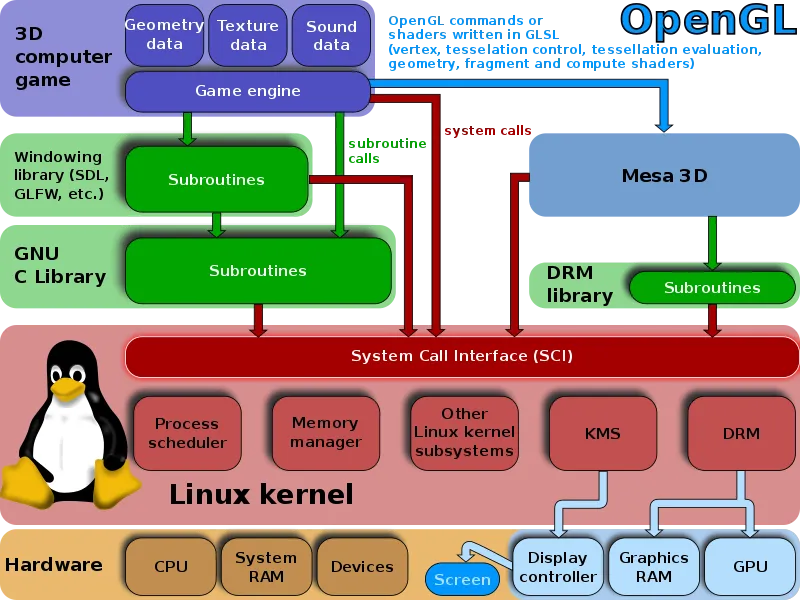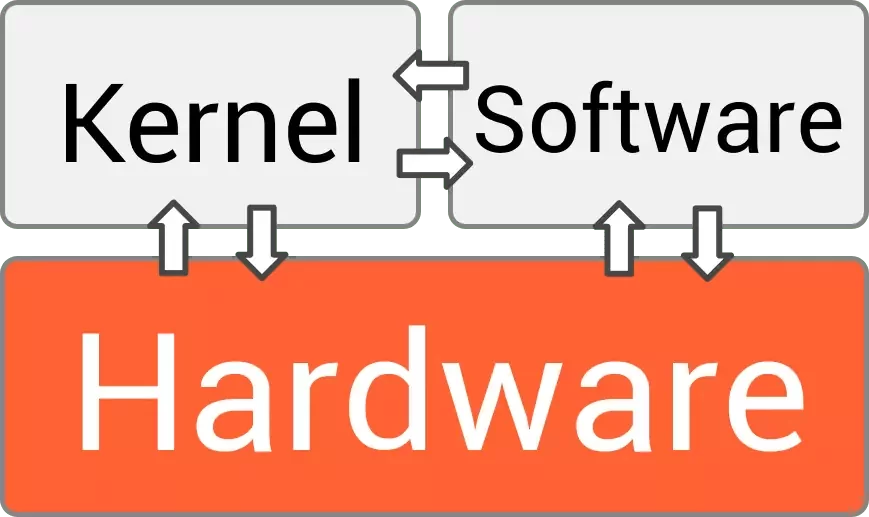
Table of Contents
What is Kernel?
A Kernel is a program that’s the guts ANd core of an OS. Since the operating system has management over the system thus, the Kernel conjointly has management over everything within the system. It’s the foremost vital part of AN operating system. Whenever a system starts, the Kernel is that initial program that’s loaded when the bootloader as a result of the Kernel must handle the remainder of the factor of the system for the operating system. The Kernel remains within the memory until the operating system is shut-down.
The Kernel is accountable for low-level tasks like disk management, memory management, task management, etc. It provides an interface between the user and also the hardware parts of the system. Once a method makes a request to the Kernel, then it’s known as a call.
A Kernel is supplied with a protected Kernel space that may be a separate space of memory and this space isn’t accessible by alternative application programs. So, the code of the Kernel is loaded into this protected Kernel space. excluding this, the memory employed by alternative applications has termed the Userspace. As these squares measure 2 totally different areas within the memory, thus communication between them may be a bit slower.
Functions of a Kernel
Following square measure the functions of a Kernel:
Access pc resource: A Kernel will access numerous pc resources just like the mainframe, I/O devices and alternative resources. It acts as a bridge between the user and also the resources of the system.
Resource Management: it’s the duty of a Kernel to share the resources between numerous methods in such a way that there’s uniform access to the resources by each method.
Memory Management: each method desires some memory space. So, memory should be allotted and deallocated for its execution. of this memory management is finished by a Kernel.
Device Management: The peripheral devices connected within the system square measure employed by the processes. So, the allocation of those devices is managed by the Kernel.
Kernel Mode and User Mode
There square measure bound directions that require to be dead by Kernel solely. So, the mainframe executes these directions within the Kernel Mode solely. As an example, memory management ought to be worn out by Kernel-Mode solely. whereas within the User Mode, the mainframe executes the processes that square measure given by the user within the Userspace.
Types of Kernel
In general, there are units of 5 kernels. They are:
1. Monolithic Kernels
Monolithic Kernels are unit those Kernels wherever the user services and also the kernel services area unit enforced within the same memory space i.e. completely different memory for user services and kernel services aren’t employed in this case. By doing so, the dimensions of the Kernel are exaggerated and this, in turn, will increase the dimensions of the package. As there’s no separate Userspace and Kernel space, that the execution of the method is quicker in Monolithic Kernels.
Advantages:
It provides central processor programming, memory programming, file management through System calls solely.
Execution of the method is quick as a result of there’s no separate memory space for user and kernel.
Disadvantages:
If any service fails, then it results in system failure.
If new services area units to be added then the complete package must be changed.
2. Microkernel
A Microkernel is completely different from Monolithic kernel as a result of an exceedingly Microkernel, the user services, and kernel services area unit enforced into completely different areas i.e. we tend to use Userspace and Kernel space just in case of Microkernels. As we tend to area unit mistreatment Userspace and Kernel space on an individual basis, therefore it reduces the dimensions of the Kernel and this, in turn, reduces the dimensions of the package.
As we tend to area unit mistreatment completely different areas for user services and kernel service, that the communication between application and services is finished with the assistance of message parsing and this, in turn, reduces the speed of execution.
Advantages:
If new services are unit to be added then it may be simply added.
Disadvantages:
Since we tend to area unit mistreatment Userspace and Kernel space on an individual basis, that the communication between these will cut back the execution time.
3. Hybrid Kernel
A Hybrid Kernel may be a combination of each Monolithic Kernel and Microkernel. It makes the utilization of the speed of Monolithic Kernel and also the modularity of Microkernel.
Hybrid kernels are unit small kernels that have some “non-essential” code in kernel-space so as for the code to run a lot more quickly than it might be in user-space. So, some services like network stack or filesystem area units run in Kernel space to cut back the performance overhead, but still, it runs kernel code as servers within the user-space.
4. Nanokernel
In a Nanokernel, because the name suggests, the total code of the kernel is incredibly tiny i.e. the code execution within the privileged mode of the hardware is incredibly tiny. The term nanokernel is employed to explain a kernel that supports a unit of time clock resolution.
5. Exokernel
Exokernel is an Associate in Nursing package kernel that’s developed by the university parallel and also the Distributed operational Systems cluster. Here during this sort of kernel, the resource protection is separated from the management and this, in turn, leads to permitting the USA to perform application-specific customization.
In the Exokernel, the concept isn’t to implement all the abstractions. however, the concept is to impose as few abstractions as attainable and by doing that the abstraction ought to be used only required. So, no force abstractions are there in Exokernel and this can be the feature that produces it completely different from a Monolithic Kernel and Microkernel. however, the downside of this can be the advanced style. The planning of the Exokernel is incredibly advanced.

Here is a list of some famous kernel and the respective OS they are used for:
|
Kernel Name
|
OS
|
|
Amiga Exec
|
Amiga OS
|
|
Compute Node Linux
|
Compute Node Linux
|
|
DragonFly BSD kernel
|
Dragonfly BSD
|
|
Free BSD kernel
|
Orbis OS, FreeBSD, Debian GNU
|
|
GNU Hurd
|
GNU, Hurd
|
|
GNU Match
|
GNU Hurd
|
|
Inferno kernel
|
Inferno
|
|
Linux kernel
|
L4
|
|
Match kernel
|
Android, Ubuntu, CentOS, webOS, FireOS,ChromeOS,Tizen, Sailfish
OS,Syllable Server |
|
Minix kernel
|
MINIX 3
|
|
NetBSD kernel
|
NetBSD, kNetBSD
|
|
NetWare kernel
|
Netware
|
|
OpenBSD kernel
|
OpenBSD
|
|
OS/2 kernel
|
OS/2 & above
|
|
Plan 9 kernel
|
Plan 9 drom Bell Labs
|
|
ReactOS kernel
|
React OS
|
|
Rockbox kernel
|
RockBox
|
|
Solaris kernel
|
Solaris, OpenSolaris, Nexenta OS
|
|
SPARTAN kernel
|
Helen OS
|
|
SunOS kernel
|
Sun OS
|
|
Trix kernel
|
Trix
|
|
Windows NT kernel
|
Windows
|
|
XNU(Darwin kernel)
|
iOS, macOS, iPadOS, tvOS, watchOs
|
Thank you, please comment and subscribe the blog & show your support





